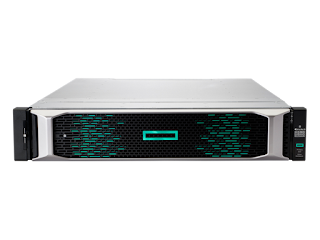The next BriefingsDirect intelligent storage innovation discussion explores how Norway-based Intility sought and found the cutting edge of intelligent storage.
Stay with us as we learn how this leading managed platform services provider improved uptime -- on the road to 100 percent -- and reduced complexity for its end users.
To hear more about the latest in intelligent storage strategies that lead to better business outcomes, please welcome Knut Erik Raanæs, Chief Infrastructure Officer at Intility in Oslo, Norway. The interview is conducted by Dana Gardner, Principal Analyst at Interarbor Solutions.
Here are some excerpts:
Gardner: Knut,
what trends and business requirements have been driving your need for Intility
to be an early adopter of intelligent
storage technology?
 Raanæs: For
us, it is important to have good storage systems that are easy to operate to
lower our management costs. At the same time, it gives great uptime for our customers.
Raanæs: For
us, it is important to have good storage systems that are easy to operate to
lower our management costs. At the same time, it gives great uptime for our customers.
Gardner: You
are dealing not only with quality of service requirements; you also have very
rapid growth. How does intelligent storage help you manage such rapid growth?
Raanæs: By
easily having performance trends shown so we can spot when we are running full.
If that happens, we can react before we run out of capacity.
Gardner: As a managed cloud service
provider, it’s important for you to have strict service level agreements (SLAs)
met. Why are the requirements of cloud services particularly important when it
comes to the quality of storage services?
Intelligent, worry-free storage
 |
| Raanæs |
Raanæs: It’s
very important to have good quality of service separation because we have lots
of different kinds of customers. We don’t want to have the noise-enabled
problem where one customer affects another customer -- or even the virtual
machine (VM) of one customer affects another VM. The applications should work
independently of each other.
That’s why we have been using Hewlett Packard Enterprise (HPE)
Nimble Storage. Our
quality of service would be much worse at the VM disk level. It’s very good
technology.
Gardner: Tell us
about Intility, your size, scope, how long you have been around, and some of
the major services you provide.
Raanæs:
Intility was founded in 2000. We have always been focused on being a managed
cloud service provider. From the start, there have been central shared services,
a central platform, where we on-boarded customers and they shared email systems,
and Microsoft
Active Directory, along with all the application backup systems.
Over the last few years, the public
cloud has made our customers more open to cloud solutions in general, and to not
having servers in the local on-premises room at the office. We have now grown
to more than 35,000 users, spread over 2,000 locations across 43 countries. We
have 11 shared services datacenters, and we also have customers with edge
location deployments due to high latency or unstable Internet connections. They
need to have the data close to them.
Gardner: What is
required when it comes to solving those edge storage needs?
Customers
often want inexpensive solutions. We have to look at different
solutions that give the best stability but don't cost too much. And we
need remote management of the solution.
Raanæs: Those customers often want inexpensive solutions. So we have to look at different solutions and pick the one that gives the best stability but that also doesn’t cost too much. We also need easy remote management of the solution, without being physically present.
Gardner: At Intility,
even though you’re providing infrastructure-as-a-services (IaaS), you are also providing
a digital transformation benefit. You’re helping your customers mature and better
manage their complexity as well as difficulty in finding skills. How does
intelligent IaaS translate into digital transformation?
Raanæs: When
we meet with potential customers, we focus on taking away concerns about infrastructure.
They are just going to leave that part to us. The IT people can then just move
up in [creating value] and focus on digitalizing the business for their customers.
Gardner: Of
course, cloud-based services require overcoming challenges with security, integration,
user access management, and single sign on. How are those higher-level services
impacted by the need for intelligent storage?
Smart storage security
Raanæs: With
intelligent storage, we can focus on having our security operations
center (SOC) monitor responses the instant they see them on our platforms.
We can keep a keen eye on our storage systems to make sure that nothing ever happens
on the storage. That can be an early signal of something happening.
 Gardner: Please
describe the journey you have been on when it comes to storage. What systems
you have been using? Why have intelligence, insights, and analysis capabilities
been part of your adoption?
Gardner: Please
describe the journey you have been on when it comes to storage. What systems
you have been using? Why have intelligence, insights, and analysis capabilities
been part of your adoption?
Raanæs: We
started back in 2013 with HPE 3PAR arrays.
Before that we used IBM storage. We had multiple single-Redundant Array of
Inexpensive Disks (RAID) sets and had to manage hotspots ourselves, so by moving
even one VM we had to try and balance it out manually.
In 2013, when we went with the
first 3PAR array, we had huge benefits. That 3PAR array used less space and at the
same time we didn’t have to manage or even out the hotspots. 3PAR and its
active controllers were a great plus for us for many years.
But about one-and-a-half years ago, we started using HPE Nimble arrays, primarily due to the needs of VMware vCenter and quality of service requirements. Also, with the Nimble arrays, the InfoSight technology was quite nice.
Gardner: Right.
And, of course, HPE
is moving that InfoSight technology into more areas of their infrastructure.
How important has InfoSight been for you?
Raanæs: It’s
been quite useful. We had some systems that required us to use other third-party
applications to give an expansive view of the performance of the environment. But
those applications were quite expensive and had functionality that we really
didn’t need. So at first we pulled data from the vCenter database and visualized
the data. That was a huge start for us. But when InfoSight came along later it gave
us even more information about the environment.
Gardner: I
understand you are now also a beta customer for HPE Primera storage.
Tell us about your experience with Primera. How does that move the needle
forward for you?
For 100 percent uptime
Raanæs: Yes,
we have been beta
testing Primera, and it has been quite interesting. It was easy to set up.
I think maybe 20 minutes from getting it into the rack and just clicking
through the setup. It was then operational and we could start provisioning
storage to the whole system.
And with Primera, HPE is going
in with 100 percent uptime guarantee. Of course, I still expect to deal with
some rare incidences or outages, but it’s nice to see a company that’s willing
to put their money where their mouth is, and say, “Okay, if there is any
downtime or an outage happens, we are going to give you something back for it.”
Gardner: Do
you expect to put HPE Primera into production soon? How would you use it first?
With
Primera, HPE is going in with 100 percent uptime guarantee. It's nice
to see a company that's willing to put their money where their mouth is.
Raanæs: So we are currently waiting for our next software upgrade for HPE Primera. Then we are then going to look at putting it into production. The use case is going to be general storage because we have so much more storage demand and need to try to keep it consistent, to make it easier to manage.
Gardner: And
do you expect to be able to pass along these benefits of speed of deployment
and 100 percent uptime to your end users? How do you think this will improve
your ability to deliver SLAs and better business outcomes?
Raanæs: Yes, our
end users are going to be quite happy with 100 percent uptime. No one likes
downtime -- not us, not our customers. And HPE Primera’s speed of deployment
means that we have more time to manage other parts of the platform and to get
better service out to the customers.
Gardner: I
know it’s still early and you are still in the proof of concept stage, but how
about the economics? Do you expect that having such high levels of advanced
intelligence across storage will translate into your ability to do more for
less, and perhaps pass some of those savings on?
Raanæs: Yes,
I expect that’s going to be quite beneficial for us. Because we are based in
Norway, one of our largest expenses is for people. So, the more we can automate
by using the systems, the better. I am really looking forward to seeing this improve
and getting easier to manage systems and analyze performance within a few
hours.
Gardner: On
that issue of management, have you been able to use HPE Primera to the degree
where you have been able to evaluate its ease of management? How beneficial is
that?
Work smarter, not harder
Raanæs: Yes,
the ease of management was quite nice. With Primera you can do the service
upgrade more easily. So with 3PAR, we had to schedule an upgrade with the
upgrade team at HPE and had to wait a few weeks. Now we can just do the upgrade
ourselves.
And hardware replacements are
easier, too. We can just get a nice PDF showing you how to replace the parts.
So it’s also quite nice.
I also like the part of the service
processor in 3PAR that’s now just garnered with Primera; it’s in with the
array. So, that’s one less thing to worry about managing.
Gardner: Knut,
as we look to the future, other technologies are evolving across the
infrastructure scene. When combined with something like HPE Primera, is there a
whole greater than the sum of the parts? How will you will be able to use more
intelligence broadly and leverage more of this opportunity for simplicity and passing
that onto your end users?
Raanæs: I’m
hoping that more will come in the future. We are also looking at non-volatile memory express (NVMe).
That’s a caching solution and it’s ready to be built into HPE Primera, too. So
that’s also quite interesting to see what the future will bring there.
Listen
to the podcast. Find it on iTunes. Read a full transcript or download a copy. Sponsor: Hewlett Packard Enterprise.
You may also be
interested in:
- As hybrid IT complexity ramps up, operators look to data-driven automation tools
- Cerner’s lifesaving sepsis control solution shows the potential of bringing more AI-enabled IoT to the healthcare edge
- How containers are the new basic currency for pay as you go hybrid IT
- HPE strategist Mark Linesch on the surging role of containers in advancing the hybrid IT estate
- The venerable history of IT systems management meets the new era of AIOps-fueled automation over hybrid and multicloud complexity
- How the Catalyst UK program seeds the next generations of HPC, AI, and supercomputing
- HPE and PTC Join Forces to Deliver Best Outcomes from the OT-IT Productivity Revolution
- How rapid machine learning at the racing edge accelerates Venturi Formula E Team to top-efficiency wins
- The budding storage relationship between HPE and Cohesity brings the best of startup innovation to global enterprise reach




